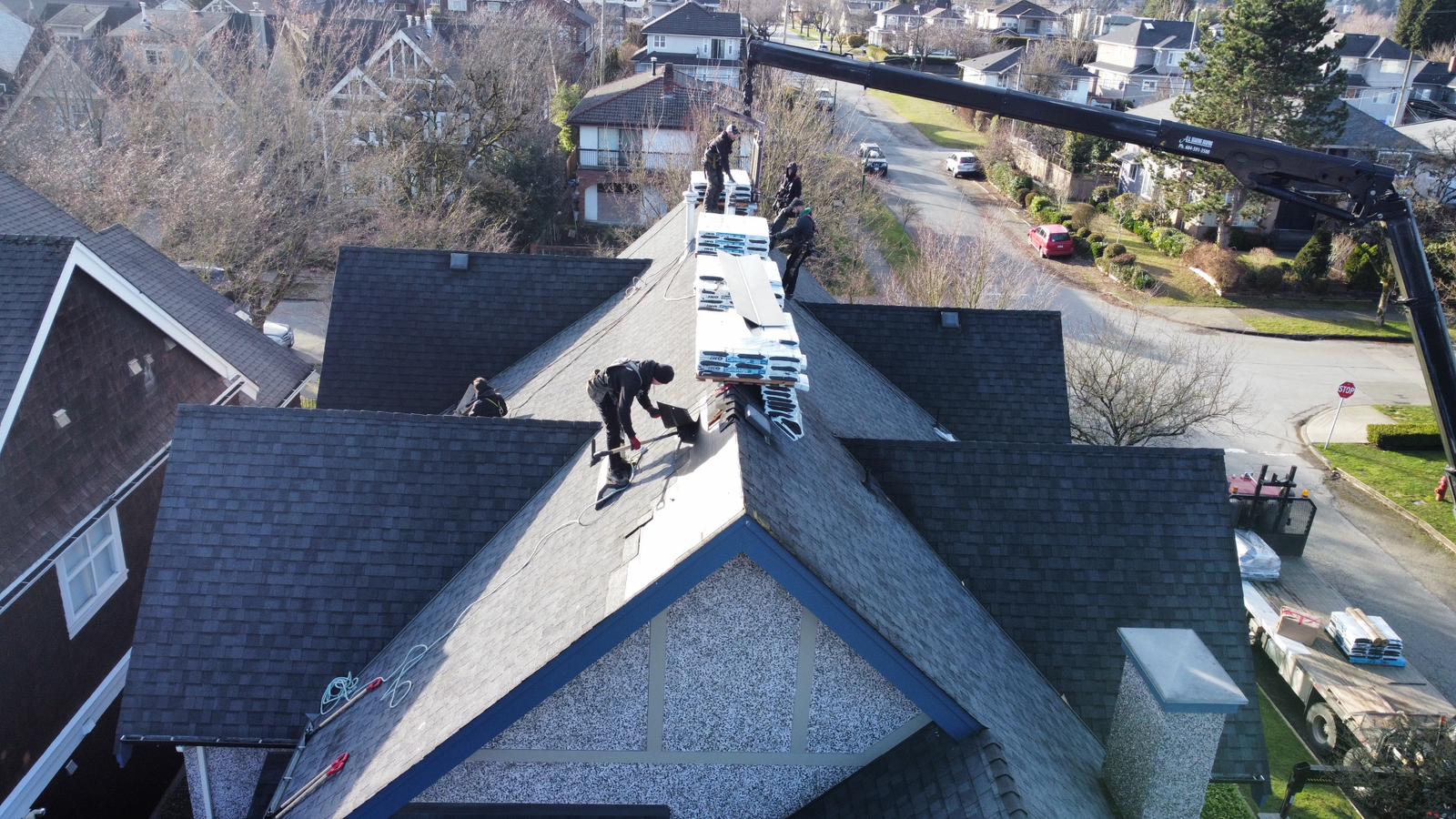Schedule A Free Estimate!
Common Roofing Questions Answered

When it comes to maintaining or replacing your roof, questions are inevitable. Your roof is one of the most vital parts of your home, protecting you and your family from the elements, so it’s natural to want clarity about the process, costs, and what to expect. Below, we answer some of the most commonly asked questions about roofing services to help you make informed decisions for your home.
1. How Much Does a New Roof Cost?
The cost of a new roof can vary significantly based on several factors such as the size of your home, the type of roofing material you choose, your location, and the contractor you hire. On average:
- Asphalt shingles, the most common roofing material, can cost between $5,000 to $12,000 for an average-sized home.
- Metal roofing typically ranges from $10,000 to $25,000, depending on the style and material.
- Premium materials like slate or clay tiles can cost anywhere from $20,000 to $50,000 or more.
Keep in mind that a detailed roof inspection is essential for an accurate estimate. If your roof requires structural repairs or removal of multiple old layers, that will add to the cost. Always get quotes from multiple roofing contractors and ensure they include labor, materials, and any additional fees in their estimates.
Pro Tip:
Investing in quality materials and a reputable contractor might cost more upfront, but it can save you money in the long run through durability and fewer repairs.
2. What Are the Signs That It’s Time for a New Roof?
Knowing when to replace your roof isn’t always obvious, but there are key warning signs to watch for:
- Damaged shingles: Look for curling, cracking, or missing shingles.
- Roof age: Most asphalt shingle roofs last 20 to 25 years. If your roof is approaching this age, it may be time for a replacement.
- Leaking or water damage: Stains on ceilings or walls could signal leaks from damaged areas.
- Sagging rooflines: A visible dip or sag in the roofline often indicates structural issues.
- Granule loss: If you notice lots of shingle granules in your gutters, it may indicate significant wear.
Addressing these issues promptly can prevent further damage to your home.
Pro Tip:
Schedule an annual roof inspection to catch problems early, especially after severe weather events.
3. Can You Install a New Roof Over an Old One?
Yes, in some cases, you can install a new roof over an old one, but this depends on the condition of your existing roof and local building codes. Installing a new layer of shingles over an old one can save time and money, but there are drawbacks:
- Weight concerns: Adding a second layer increases the roof’s weight, which can put stress on your home’s structure.
- Hidden issues: Existing problems like rot or leaks may be concealed and worsen over time.
Most roofing professionals recommend a complete tear-off to examine the structural integrity of the roof and ensure the new layer is installed on a solid foundation.
Pro Tip:
If your home already has two layers of shingles, a tear-off will likely be mandated by your local regulations.
4. How Long Should My Roof Last?
The lifespan of your roof depends largely on the materials used:
- Asphalt shingles typically last 20–30 years.
- Metal roofs can last 40–70 years with proper maintenance.
- Slate, tile, and clay roofs can endure 50–100 years, making them some of the most durable options.
Environmental factors like climate, weather conditions, and maintenance also play a role in longevity. For example, frequent exposure to strong sun or heavy storms can shorten your roof’s lifespan.
Pro Tip:
Perform regular roof maintenance, like cleaning gutters and removing debris, to help extend the life of your roof.
5. Does My Homeowner’s Insurance Cover My Roof?
Most homeowner’s insurance policies cover roof damage caused by unexpected events such as:
- Storms
- Hail
- Fires
However, they may not cover damage caused by neglect or regular wear and tear. If your roof is older, you might only receive partial coverage based on its depreciated value. It’s a good idea to review your insurance policy or consult with your provider to understand your coverage.
Pro Tip:
Take photos of your roof before and after damage occurs. This documentation can help strengthen your insurance claim.
6. Does a Leaky Roof Need to Be Completely Replaced?
Not necessarily. Minor leaks can often be repaired without replacing the entire roof. However, the extent of the damage will dictate the best course of action. Consider the following:
- If the leak is localized (e.g., around a vent or flashing), a professional repair might suffice.
- If the damage is widespread or the roof is nearing the end of its lifespan, a replacement could be more cost-effective in the long run.
Pro Tip:
Act quickly when you notice a leak. Water damage can spread, leading to mold growth and structural issues.
7. What Does a New Roof Installation Process Involve?
Here’s a high-level overview of what to expect during a roof installation:
- Inspection and planning: The contractor assesses your roof and provides an estimate. You’ll choose materials and schedule a timeline.
- Tear-off: If necessary, the old roof is removed.
- Repairs: Any damaged decking or structural issues are addressed.
- Installation: A waterproof underlayment is installed, followed by the new roofing materials.
- Cleanup: The area is cleared of debris, and the contractor conducts a final inspection.
Pro Tip:
Ask your contractor about warranties for both labor and materials to ensure long-term peace of mind.
Your roof is a crucial part of your home’s protection and value. Whether you’re dealing with leaks, considering a replacement, or just want to be prepared, understanding these common roofing questions can empower you to make informed decisions. For any roofing concerns, it’s always best to consult a reputable professional. With the right materials and proper care, your roof can provide lasting protection for decades to come.
Need Roofing Help?
If you have more questions or need assistance with a roofing project, reach out to a trusted local roofing contractor today.

